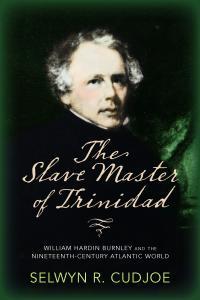Rituals of grief
By Dr Selwyn R. Cudjoe
September 26, 2022
"The glories of our blood and state, Are shadows, not substantial things; There is no armour against fate, Death lays his icy hands on kings. Sceptre and crown must tumble down, And, in the dust, be equal made with the poor crooked scythe and spade."
—James Shirley
I didn't expect to spend so much time looking at the funeral of Elizabeth II. I was intrigued by the spectacle made of death (a display put on for its visual effect and impact) and the ritual of grief (a solemn ceremony performed according to a prescribed order) that was enacted before millions of people.
It took 20 years of planning to stage this event. It was the responsibility of Edward Fitzalan-Howard, who inherited the role of Earl Marshal of England when his father died in 2002. He "descended from the same family that has planned royal funerals and coronations since 1672". He takes his responsibility seriously. He did not earn a cent for the tireless work he did for the Queen's funeral.
The official mourners came from all over the world to take part in this spectacle. Even our President, Paula-Mae Weekes, went to Windsor to offer her sympathies on behalf of Trinbagonians. More than 100 world leaders, including US President Joe Biden, Emperor Naruhito of Japan, and South African President Cyril Ramaphosa converged on London to pay their respect to the queen.
Ukrainian First Lady Olena Zelenska met with the royal family. Chinese President Xi Jinping and Saudi Arabia's crown prince Mohammed Bin Salman were invited but did not attend. Neither President Alexander Lukashenko of Belarus nor Russian President Vladimir Putin was invited. North Korea, Nicaragua and Iran were permitted to send ambassadors but not their heads of state. A spokesman for the Russian foreign ministry called Putin's lack of invitation "profoundly immoral".
The pageantry, the culmination of ten days of mourning, suggested that whatever others may have said about the crimes this imperial power committed or how it achieved its wealth was not important. Britain still remains one of the most respected nations of the world. Its citizens gloried in the attention that was paid to their country and came out in great numbers to honour their Queen.
England didn't rise to glory overnight. It has been around since the Normans invaded England in 1066. Windsor Castle where the Queen was laid to rest was the home of the royal family for over 900 years. It is the final resting place for ten British monarchs. "Just a few yards from the Queen's private apartments in Windsor lies St George's Chapel, which was begun in 1475 by Edward IV and completed by Henry VIII in 1528, and which is now her last resting place." (The New York Times, September 20). Westminster Abbey, where the state funeral took place, is the resting place of Elizabeth
The Queen's committal at Windsor Castle was laden with more ritual than the funeral at Westminster Abbey. At that ceremony the crown jeweller removed the symbols of Elizabeth's reign—the imperial state crown, the orb and the sceptre—and placed them on the altar. Symbolically, it signalled the end of Elizabeth II's reign.
Perhaps the most dramatic part of this staged performance was revealed in the final act before the curtain was drawn: "As a totem of the end of his service, the Queen's lord chamberlain, the most senior officer in the royal household, broke his wand of office into two pieces and placed them on to the coffin, to be buried with his sovereign." (NYT, September 20.)
At Westminster Abbey where the funeral service began, Justin Welby, the Archbishop of Canterbury, reminded his audience about Queen Elizabeth's importance. He said: "The pattern for many leaders is to be exalted in life, and forgotten after death... The grief of this day, felt not only by the late Queen's family but all around the nation, the Commonwealth, and the world, arises from her abundant life and loving service now gone from us. She was joyful, present to so many, touching a multitude of lives."
These words, infused with so much meaning, reminded me of lines from Thomas Gray's Elegy Written in a Country Churchyard: "The boast of heraldry, the pomp of pow'r. / And all that beauty, all that wealth e'er gave, / Awaits alike th' inevitable hour. / The paths of glory lead but to the grave." These words suggest that whatever we do or achieve in life, our end is the same, regardless of the pageantry or spectacle that accompanies our last rites.
When the crown jeweller removed the crown, the orb and sceptre from the Queen's coffin and placed them on the altar, I was reminded of James Shirley's immortal words: "Sceptre and crown must tumble down, And, in the dust, be equal made with the poor crooked scythe and spade." They rang with an additional force and renewed certitude.
Africans in the New World believed that "God was real. They knew Him. They had met Him personally in many a wild orgy or religious frenzy or in the black stillness of the night" (Du Bois, Black Reconstruction). Du Bois wanted to tell his readers that black or white; slave or master; preacher and sinners are equal in death.
Although the pomp and rituals were present, Archbishop Welby's assurance, "We will meet again" when we face "the merciful judgment of God" was problematic. I wondered how the divine rights the Queen enjoyed would square with the sufferings of my forebears when they were on this earth.
the God of Mercy help us to forget those bad old days of slavery and to remember His promise to comfort us when we leave this
Prof. Cudjoe's email address is scudjoe@wellesly.edu. He can be reached @ProfessorCudjoe.
Share your views here...

The Slave Master of Trinidad by Dr. Selwyn R. Cudjoe
|

